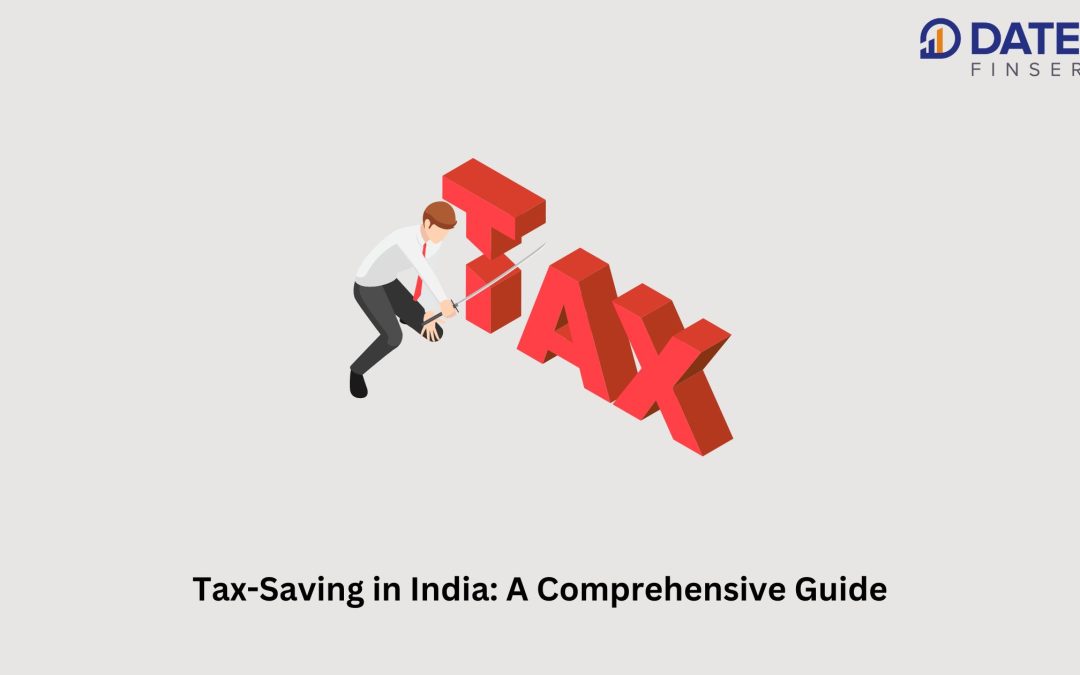In the intricate landscape of Indian taxes, understanding the avenues for savings is crucial. From income and wealth taxes to property levies, each component plays a pivotal role in shaping the financial landscape of individuals and corporations. The revenue generated through these taxes is the lifeblood of the country, fueling economic growth and development.
As the tax year progresses, individuals eagerly seek opportunities to minimize their tax burden and optimize their financial standing. The looming ITR filing deadline prompts a surge in searches for viable tax-saving investments, making it imperative to explore lawful and strategic avenues provided by the Income Tax Act of 1961.
The Basics of Tax Saving
Whether you’re a salaried professional, a freelancer, a business owner, or an investor, meeting your tax obligations within the stipulated time frame is essential. The first step towards effective tax planning is to grasp the available options under different sections of the Income Tax Act.
Tax-Saving Options: Section-Wise Breakdown
1. Section 80C:
– Investments in PPF, PF, insurance, NPS, ELSS, etc.
– Exemption Limit: ₹150,000
2. Section 80CCD:
– NPS Investments
– Exemption Limit: ₹50,000
3. Section 80D:
– Investment in medical insurance for self or parents
– Exemption Limit: ₹25,000/₹50,000
4. Section 80EE:
– Interest on Home loan
– Exemption Limit: ₹50,000
5. Section 80EEA:
– Interest on Home loan
– Exemption Limit: ₹1,50,000
6. Section 80EEB:
– Interest on electric vehicle loan
– Exemption Limit: ₹1,50,000
7. Section 80E:
– Interest on education loan
– Full amount deductible
8. Section 24:
– Interest paid on the home loan
– Exemption Limit: ₹200,000
9. Section 10(13A):
– House Rent Allowance (HRA)
– As per the salary structure
Section 80C: In-Depth Analysis
Section 80C is a cornerstone of tax-saving options available to individuals and HUFs. It offers multiple investment and expense avenues with deductions of up to ₹1.5 lakh in a financial year. The section encourages savings and investments by exempting tax on interest paid or credited on money borrowed for lending to a person in India.
Investment options under Section 80C include:
– Unit Linked Insurance Plan (ULIP):
– Returns: Varies with Plan Chosen
– Lock-In Period: 5 years
– Sukanya Samriddhi Yojana (SSY):
– Returns: 8.00%
– Lock-In Period: N/A
– Senior Citizen Saving Scheme (SCSS):
– Returns: 8.20%
– Lock-In Period: 5 years
– Public Provident Fund (PPF):
– Returns: 7.1%
– Lock-In Period: 15 years
– National Savings Certificate:
– Returns: 7.7%
– Lock-In Period: 5 years
– National Pension System (NPS):
– Returns: 9% to 12%
– Lock-In Period: Till Retirement
– ELSS Funds:
– Returns: Market Linked
– Lock-In Period: 3 years
– 5-Year Bank Fixed Deposit:
– Returns: 6% to 7%
– Lock-In Period: 5 years
Equity Linked Savings Scheme (ELSS): Risk and Reward
ELSS, a mutual fund category, qualifies for a tax deduction under Section 80C. With higher returns in the long run due to investments in equity markets, ELSS allows for lump-sum or SIP investments. However, a 3-year lock-in period exists, presenting a higher risk due to stock market fluctuations.
Public Provident Fund (PPF): A Long-Term Government Savings Scheme
PPF, a government savings scheme, boasts a 15-year tenure with a current interest rate of 7.1%. The tax-free interest on PPF makes it a viable option, with an accessible minimum investment of ₹500 and a maximum of ₹1.5 lakh per financial year.
National Savings Certificate (NSC): Fixed Rate of Interest
NSC offers a fixed interest rate of 7.7% per annum with a 5-year tenure. Interest received is considered a tax-saving option, allowing up to ₹1.5 lakh as a rebate under Section 80C.
Tax-Saver FDs: Fixed Rate, Fixed Taxability
Tax-saving FDs provide a tax deduction of up to ₹1.5 lakh under a 5-year tenure. With a fixed interest rate (currently between 7-8%), the interest is taxable based on the investor’s tax bracket.
Senior Citizens Savings Scheme (SCSS): Government-Backed Security
SCSS, with a tenure of 5 years, offers a rate of 8.2% (taxable) and allows for a tax deduction of up to ₹1.5 lakh, catering specifically to those aged 60 and above.
Sukanya Samriddhi Yojana (SSY): Empowering Girl Child Education
Parents with a girl child below 10 can benefit from SSY, with a tax deduction of up to ₹1.5 lakhs under Section 80C. The scheme’s interest rate is 8.00%, and the interest earned is tax-free.
Employee Provident Fund (EPF): Retirement Security
EPF, a retirement benefits scheme for salaried employees, deducts 12% of the basic salary and DA, deposited in government-recognized provident fund schemes. The deduction falls within the ₹1.5 lakh limit under Section 80C.
Home Loan Repayment: Balancing Principal and Interest
Individuals with a home loan can claim tax deductions under Section 80C for the EMI’s principal amount. However, the interest paid does not qualify for tax deductions.
Additional Deductions: Tuition Fees and Beyond
1. Tuition Fees:
– Deduction of up to ₹1.5 lakh on tuition fees for up to two children.
– Applicable to full-time courses in Indian educational institutions.
2. Other Deductions:
– Deductions under Section 80G for donations to notified institutions or funds.
Beyond Section 80C: Exploring Other Avenues
In addition to Section 80C, various other sections provide deductions for specific circumstances:
– Section 80D:
– Deductions for medical insurance premiums.
– Section 80EE:
– Deduction of up to ₹50,000 on home loan interest.
Section 80CCD:
– Deduction of up to ₹1.5 lakh for NPS contributions.
Section 80E:
– Deduction on interest paid on education loans.
-Section 80G:
– Deductions for specific charitable donations.
Conclusion
In essence, the path to effective tax savings demands time, effort, and a proactive approach to financial planning. As individuals become more aware of their rights and explore available options, the journey toward minimizing tax burdens becomes both achievable and rewarding.

